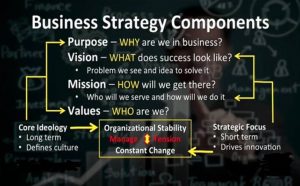Today the world is changing. How to start an entrepreneurship journey can be best explained by a recent study by the McKinsey Global Institute which found that 30 million jobs would be lost by 2030 to automation. That’s a lot of jobs.
Another study found that 100 million startups per year are occurring, and 100 million startup failures per year are occurring. That is a lot of shift; we have an opportunity and an imperative as we look at this changing world.
I love this statement by Ken Harrington at the Kauffman Foundation; our future depends on sustainable, aspirational, and massive scale entrepreneurship. Here’s the opportunity; the greatest need in the world today is a good job. All over the world, even in the worst places on the planet, I have seen the needs of food, water, shelter, clothing, education, medicine, but I can tell you with a good job, you can get all of that.
The number one need in the world is a good job. The number of businesses that will be started in the next 20 years will be more than all of history combined. Jack Ma from Alibaba, in China, one of the greatest entrepreneurs in China, has made the statement: the future of all business is that everyone will own their own company. We are now seeing a global shift in the economy, the gig economy; human-centered development, and entrepreneurship is the key.
The Entrepreneurship Journey
The problem is that many entrepreneurs are going to attempt to launch, scale, and grow their business by trial and error; reading books, and listening to people tell stories, and most will not survive. There are two imperatives to address that issue. The first one is an entrepreneurship journey; teaching the entrepreneur and equipping the entrepreneur.
The other is the entrepreneurship ecosystem around those entrepreneurs that helps support and equip those entrepreneurs. In this article, we look at the entrepreneurship journey.

-
Who are you? – Identity
When we deal with the entrepreneurship journey, you really start at a point of who you are and who your team is. We use a model called Ikigai out of Japan that really deals with four questions. What do you love to do? What are you good at? What can you get paid for? And what does the world need? It is a blend of passion, mission, profession, and vocation.
99% of the population does not understand their purpose and are left seeking that as they change jobs constantly. If you start a company, you need to start a company for the right reason, and that is based on who you are and who you are passionate about serving.
-
Align Business & Identity – Ideation
Then go into the ideation and pick a business idea that aligns with who you are, design and develop a culture that aligns with your business and your identity.
-
Skills & Core Competencies – Foundation
From there, you need to have or acquire a whole bunch of foundational core competencies.
-
Learn by doing – Activation
Once you gain that head knowledge, you want to begin to activate it. You can do that by starting a company; getting to put in place all that is needed to launch a business like the registration, obtaining all the licenses required.
-
Implementation
Launch your business through a business startup, bootstrapping and creating funds, and getting traction. Take all that active activation and begin to actually implement it with your business.
-
Local ecosystem
Then we need to join a local ecosystem that can help you grow and develop it. Then ultimately, you want to join a global community that enables the flow of resources and information across to support local entrepreneurs.
There is a journey here, a process that you go through as an entrepreneur from identity, ideation all the way to launch, growth, scaling, and exit of your business.
Business Strategy Components
There is a framework of entrepreneurship, and how this ideation and application fits in your business and picking a business idea. There are four main words in business:
-
Purpose – WHY are we in business?
-
Vision – WHAT does success look like?
-
Mission – HOW will we get there?
-
Values – WHO are we?

These are the four; why, what how, and who when we deal in business strategy. The Why are we in business and who are we should never change. These are what we would call our core ideologies. They’re long-term and define the culture of your organization.
At the same time, the strategic focus, which is your vision, and mission is short-term. It’s connected to the environment and constantly changing. It drives innovation, both inside the organization as well as it’s driven by innovation. When we look at vision, it’s not just what success looks like, it is what problem do you see? Do you have a passion to solve it? And the mission, who will you serve and how will you do it? Those things will change over time.
Leaders of organizations have this challenge between the core ideology creating organizational stability, and the constant change driven by innovation. They have to balance the dynamic tension between all of that.
Conclusion
Entrepreneurship is a very cumulative but also spiraling process. As you learn in the steps, you get kicked back to other things in the beginning that you have to go back and fix. Get started and keep fixing. Start where you’re at, go through the process, and then just keep making it better and better as you learn more and more through your entrepreneurship journey.

